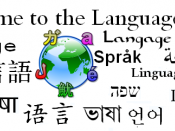Bilingual education, in early childhood, promotes quality education and a better understanding of different cultures. There are two ways bilingual education is used. One way is when English speakers learn a second language, such as Spanish, by being in a classroom where both languages are used to teach students. The second is where non-English speaking individuals learn English with the help of their native language. Both ways help individuals learn a second language more effectively and increase chances of retaining what they learn. Bilingual education promotes learning ability, fluency, and cultural understanding.
Bilingual education is a very important and serious topic here in America. In the state of Massachusetts alone in, the years of 2001 and 2002 there were about 49,000 students that were not proficient in speaking English (Mary Ann Zehr, p.1). These numbers are common place throughout America. Every where one goes there are numerous communities and people that at not fluent in speaking English.
To help this ever growing population of non English speaking peoples many schools are taking one or two different approaches to better equip the nation's youth to fit in and communicate better with the real world that surrounds them. The first program that many schools offer is called, the two way program. Such programs put English speaking children and non English speaking children together in the same class. In this type of setting, the class is taught in both English and a second language, which is almost always Spanish. This helps the English speaking students learn Spanish not only from the teacher but also with the help of their fellow classmates. This is an important way to for English speaking children to not only learn and become fluent in another language but to also learn about another culture. With the mixture of languages...


